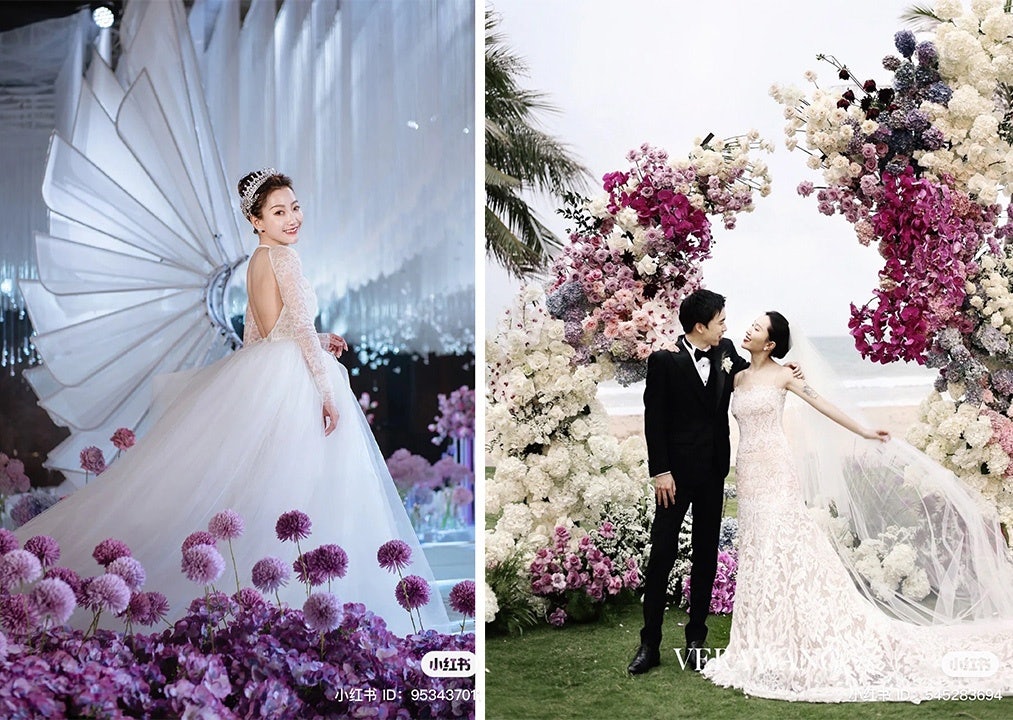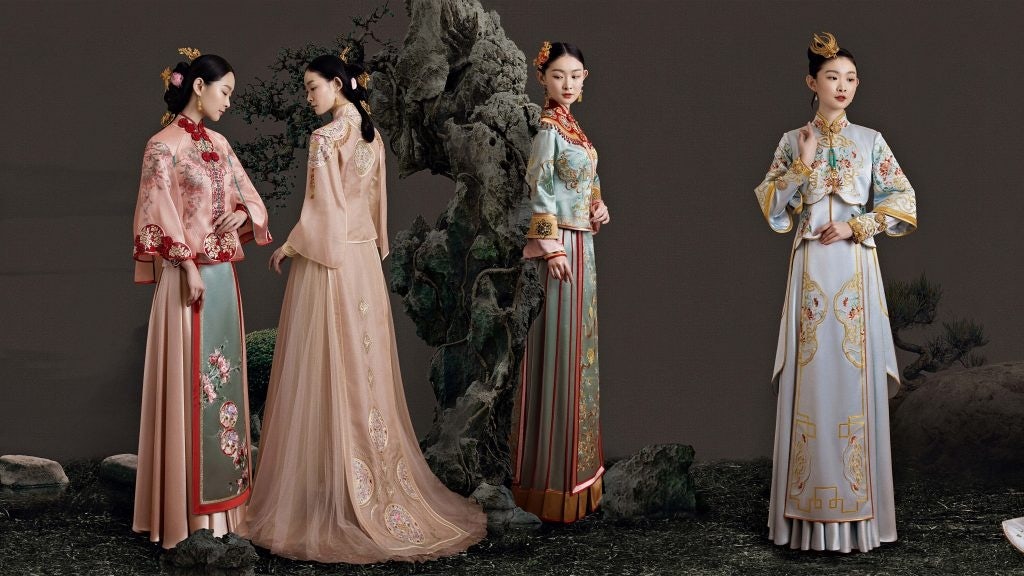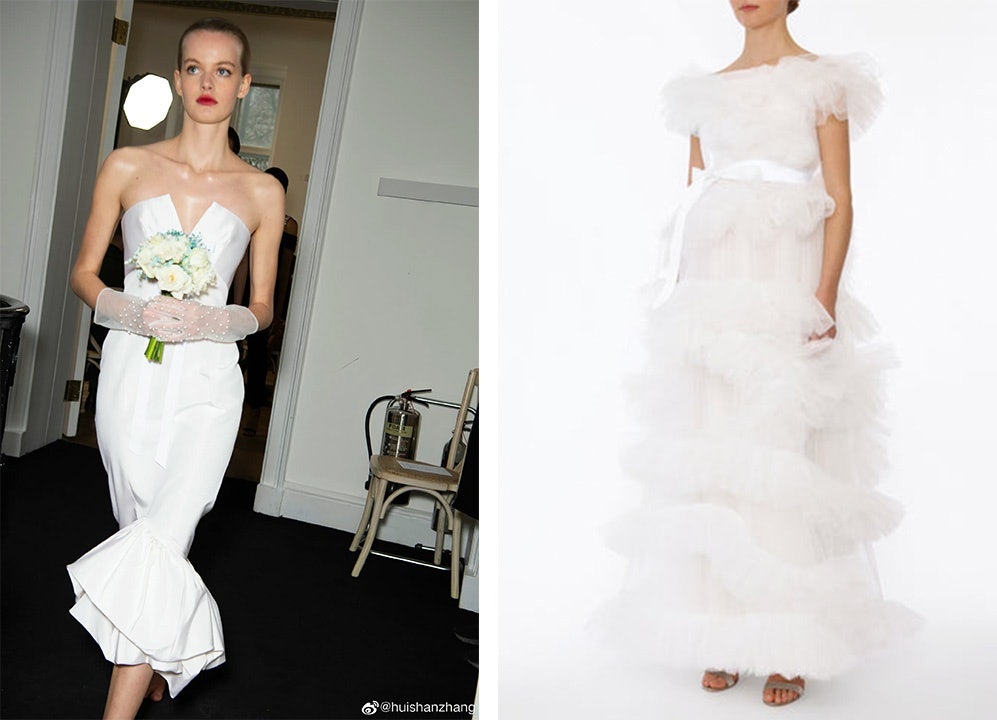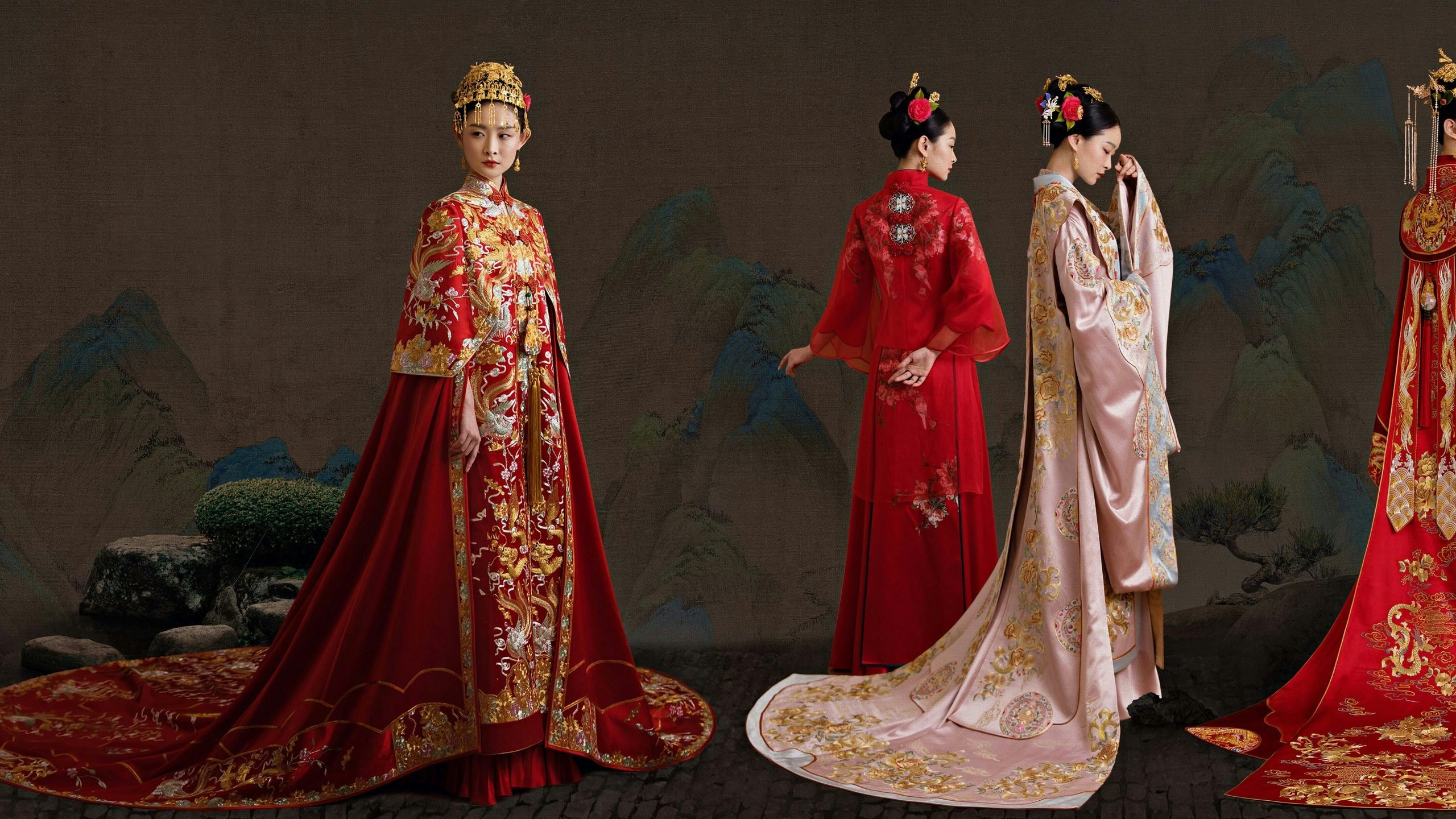Many Chinese women dream about their perfect wedding day from a young age. Hannah Yang, who is based in Shenzhen, says that “ever since I was a teenager, I had an inexplicable longing: I must wear a Vera Wang wedding dress, Jimmy Choo's crystal shoes, and hold my wedding ceremony in a castle.” This year, the dream came true for the 26-year-old, who under a sky of fireworks said “I do” to her other half.
There are many more like Yang. On the Chinese web, a catchphrase has been trending — "Marrying to true love wearing Vera Wang" (穿着Vera Wang, 嫁给爱情). As one of life’s most celebrated occasions, this translates into a significant expenditure, which is increasing for the Chinese market year on year. In 2020, the wedding sector topped around $201 billion (1.4 trillion RMB) in the country, and estimates have that figure almost tripled this year, reaching $575 billion (4 trillion RMB).

As Gen Zers get older and become the main growth engine of the bridal sector, brands are required to adapt and reinvent their strategies to cater to this young demographic. They present distinctly different mentalities, preferences, and demands from the previous generations. Here, Jing Daily dives into the bridal fashion segment to explore how luxury and designer labels can capitalize on this half-trillion-dollar market.
How much are Gen Zers willing to spend on weddings?#
Driven by the desire for a unique and customized wedding, the average expense has grown at lightning speed in recent years. According to Tencent’s White Paper on Marriage Industry Insights in 2021, despite the pandemic, China’s average spending per couple on weddings reached $25,000 (174,000 RMB) in 2020 — 2.7 times higher than in 2015.
“This is just an average ratio,” noted Anaïs Bournonville, head of the luxury division at Gentlemen Marketing Agency. “It is important to look into different target groups. Some HNWIs in China will spend millions of dollars on their wedding, favoring ultra-exclusive and extravagant locations, luxury designers’ dresses, and awesome animations.”
Although the current number of marriages is falling at a dramatically low rate — the bulletin released by the Ministry of Civil Affairs shows that 7.6 million were registered in 2021, down 6.1 percent from the previous year — the wedding market value has not been shrinking but almost tripling, signaling a tremendous opportunity for businesses.
West-East fusion#
In the past decade, under the influence of the West, local women have shown greater preferences for white gowns rather than the traditional lucky red as a predominant color for the wedding. However, rising Chinese cultural pride has made Gen Z revisit and appreciate their roots. Now, many young couples will opt for wedding decorations and bridal dresses and outfits that fuse the two aesthetics.
Besides big names like Vera Wang, local designers are receiving great recognition in mainland China thanks to this. “The interest is particularly strong when local designers give a new interpretation of the qipao 旗袍 or cheongsam,” continued Bournonville. For instance, Jusere 绝设, Farmory 名瑞, Daniel Wang, and Qipology are quickly garnering awareness.

“The combination of Chinese and Western elements is actually a fusion of multiculturalism, and we foresee it as the main trend of the future. The new generation of young people is no longer obsessed with traditional etiquettes, but give greater importance to self-expression,” commented Xu Chuanhai, founder of the Suzhou-based bridal brand Jusere, which has grown from a small atelier into a leading player in the market in the past 20 years.
In light of these trends, homegrown labels are generally better positioned than their international rivals to capitalize on this shift, thanks to their deep understanding of Chinese culture, traditions, and even the native silhouettes.
Customization is king#
Wealthier young couples are showcasing their status by customizing their wedding outfits. Shuyi Han, management project leader at Daxue consulting, explained that as many as 25 percent of the Shanghai brides and grooms spend $4300-$8600 (30,000-60,000 RMB) per dress just for bespoke extras.
The opportunity for made-to-order gowns is huge in the country. Huishan Zhang, founder and designer of the eponymous pret-à-couture house based in London, agreed: “We have seen our sales in China for bespoke dresses increase season on season from young women wanting something special for their wedding. They are not looking for something traditional, they want unique pieces.”

Newness-oriented Chinese Gen Zers are willing to foot the bill for a unique and unforgettable experience on their big day. “The average cost of a wedding in China is 8.8 times Chinese couples’ average monthly income, and 42 percent exceed their budget,” said Han.
“Young shoppers’ consumption habits have much shifted from their previous generation. They have independent and personalized tastes. They want to take part in the production, and they always keep a close eye on the market trends,” concluded Jusere’s Xu.
Clearly, luxury brands should not be alarmed by the drop in marriage. Rather, they should concentrate their efforts on communicating and delivering made-to-measure products, quality services, and memories to conquer the hearts and wallets of young to-be-wed couples and capitalize on this half-trillion-dollar market.

